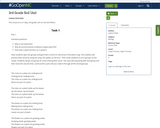
This resource is a 4 day, 3rd grade unit on Soil and Plants.
- Subject:
- Biology
- Material Type:
- Lesson Plan
- Author:
- Laytora Dash
- Date Added:
- 08/23/2019

This resource is a 4 day, 3rd grade unit on Soil and Plants.

This resource is a 4 day, 3rd grade unit on Soil and Plants.Profile image: soil by Creative Mania from the Noun Project

This resource is a 4 day, 3rd grade unit on Soil and Plants.
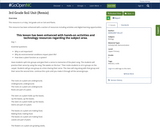
This resource is a 4 day, 3rd grade unit on Soil and Plants.This resource has been enhanced with a section of resources including activities and digital learning opportunities.

Students will use paper circuits to label various parts of the skeletal system.

The goal of this lesson is to introduce students who are interested in human biology and biochemistry to the subtleties of energy metabolism (typically not presented in standard biology and biochemistry textbooks) through the lens of ATP as the primary energy currency of the cell. Avoiding the details of the major pathways of energy production (such as glycolysis, the citric acid cycle, and oxidative phosphorylation), this lesson is focused exclusively on ATP, which is truly the fuel of life.

In this activity, students play a game that simulates the carbon cycle. During the activity students will compare the carbon cycle before and after the industrial revolution.
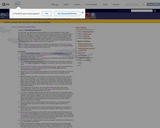
In this simulation activity, students will examine natural selection in a small population of wild rabbits.
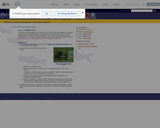
In this simulation activity, students will collect data, formulate a hypothesis, and run a series of experiments in order to discover the interplay between natural selection and sexual selection in a wild population of guppies.

Students will use an online calculator to estimate their household's carbon footprint and explore various actions to reduce it.
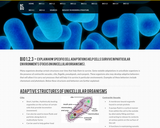
This webpage provides graphics illustrating adaptive structures and adaptive behaviors of unicellular organisms.

This assessment resource checks for student understanding of population density and the factors that can cause fluctuations in population.

Students examine exponential and logistic growth, identify carrying capacity, distinguish between density-dependent and density-independent limiting factors, apply the population model to data sets, and determine carrying capacity from population data.

In this interactive module, students examine exponential and logistic growth, identify carrying capacity, distinguish between density-dependent and density-independent limiting factors, apply the population model to data sets, and determine carrying capacity from population data.

ACE Education is the Agapé Center for Environmental Education, a carefully developed and integrated program designed to meet the goals set forth by the NC Department of Public Instruction. ACE Education is a creative way to meet NC Essential Standards for Science and Social Studies. ACE Education experiences make use of experiential learning – proven to be the most effective method of education.

Students investigate factors that limit the spread of invasive species in the United States. They compare the spread and limiting factors of three classes of invasive species - insects, plants, and aquatic invertebrates - through data sets from the National Atlas and readings on invasive species issues. This activity is part of "Investigating Your World With My World GIS," a set of activities designed for use with My World GIS software (which can be downloaded at www.natgeoed/myworldgis) to help students learn key content and practice spatial problem solving.
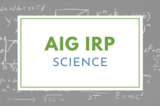
This activity will best fit when teaching about natural selection and how favored alleles lead to change in species. The activity will further this idea by introducing students to the Hardy-Weinberg Theorem, which uses allele frequency to determine if a population is evolving. The activity can be done with the entire class or as part of a differentiated lesson. This lesson was developed by NCDPI as part of the Academically and/or Intellectually Gifted Instructional Resources Project. This lesson plan has been vetted at the state level for standards alignment, AIG focus, and content accuracy.

In this biology lesson with math and ELA integration, students use real rock pocket mouse data to illustrate the Hardy-Weinberg principle.

In this activity students build protein bracelets using beads with different colors and shapes that represent the different amino acids.

This lesson will expose students to some of the problems amoebas have caused to residents of Florida. Studies have shown that virulent strains of amoebas from the genera Naegleria and Acanthamoeba have the ability to grow at high temperatures, while non-virulent strains are unable to grow at normal or elevated body temperatures.